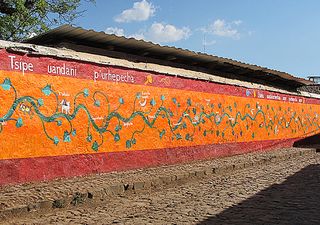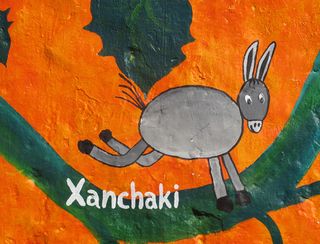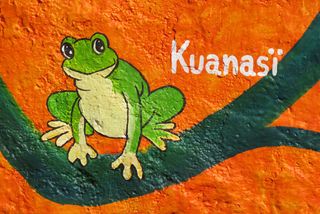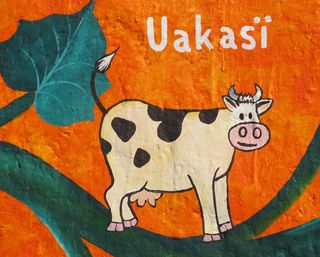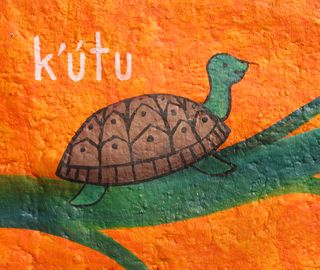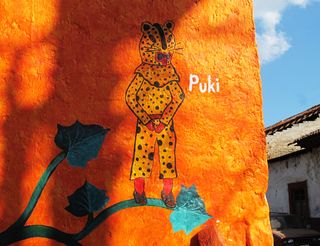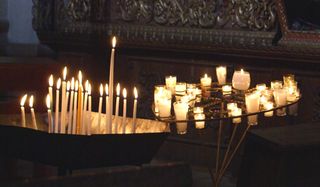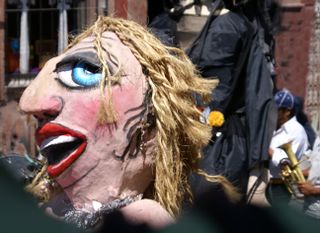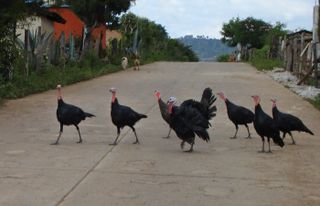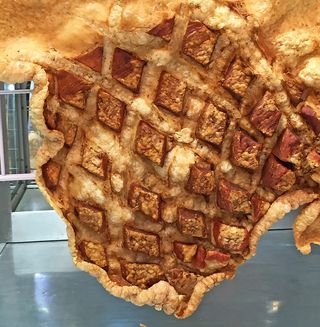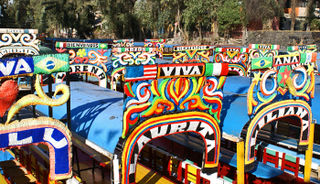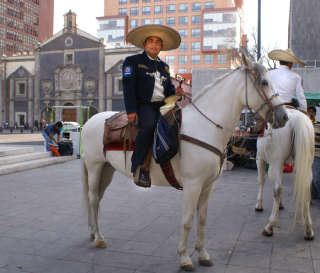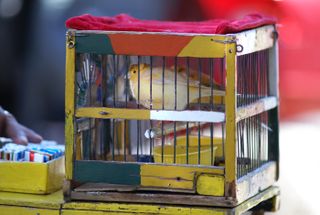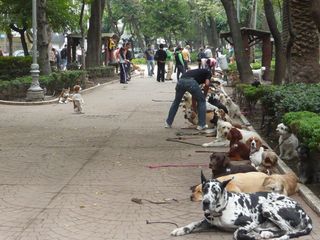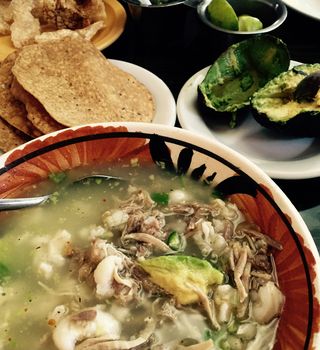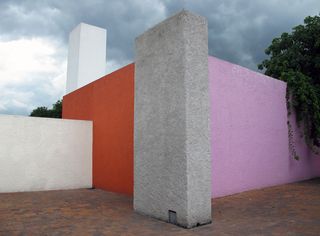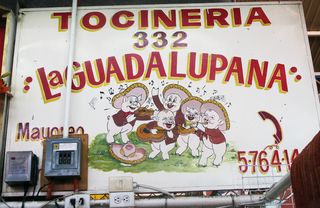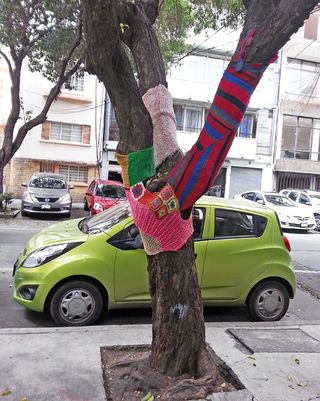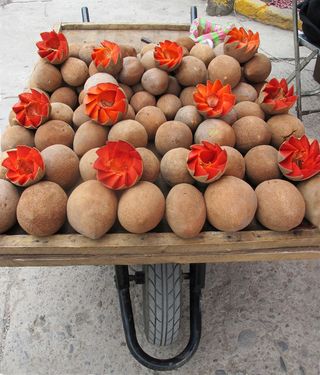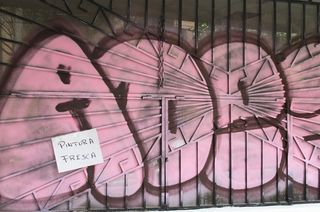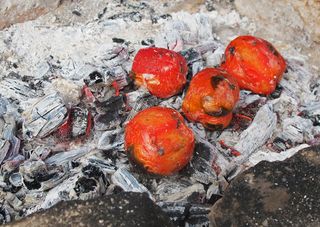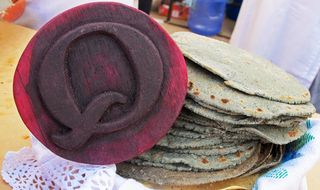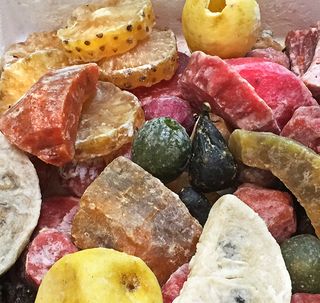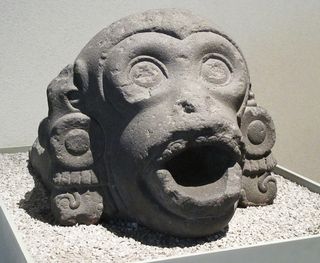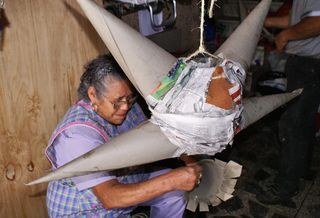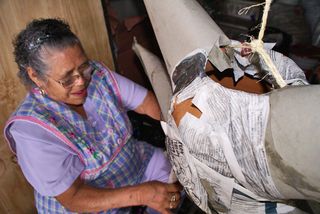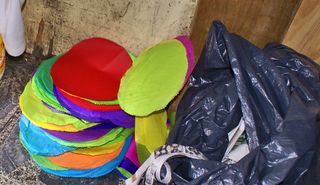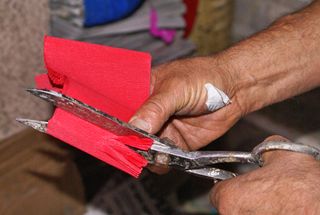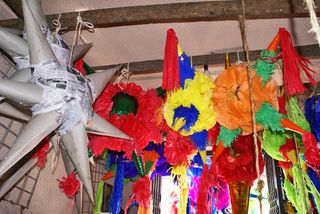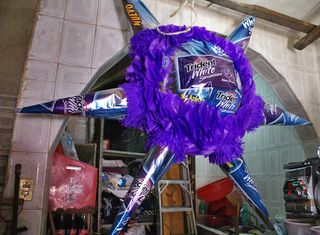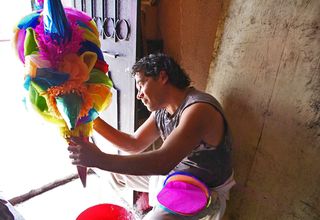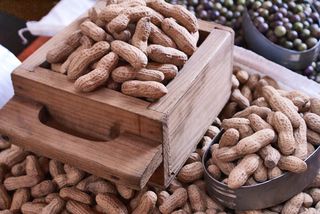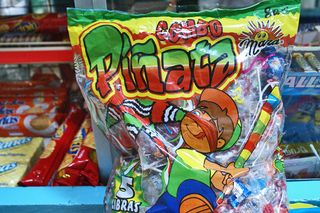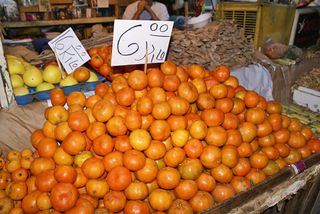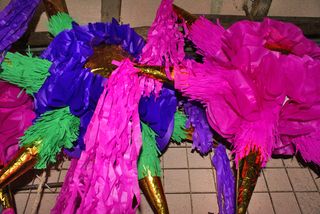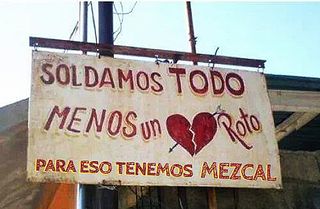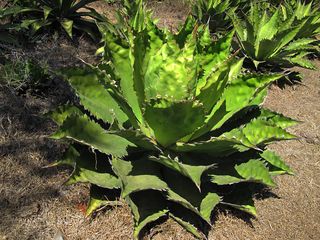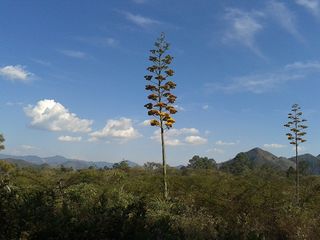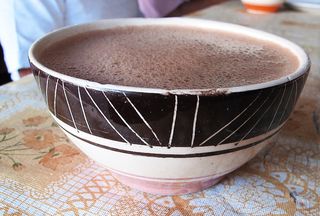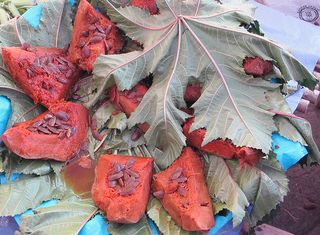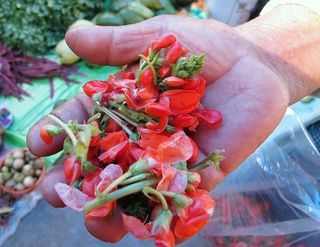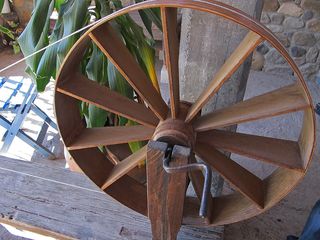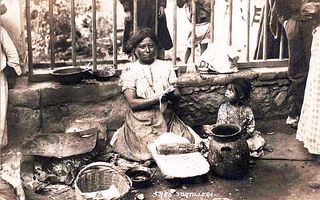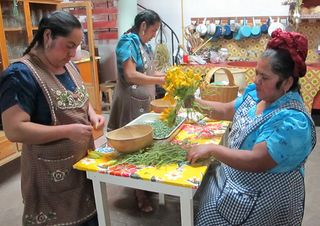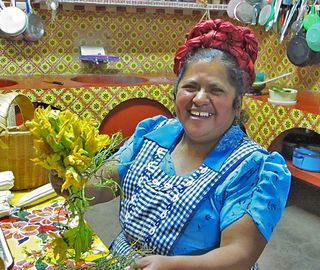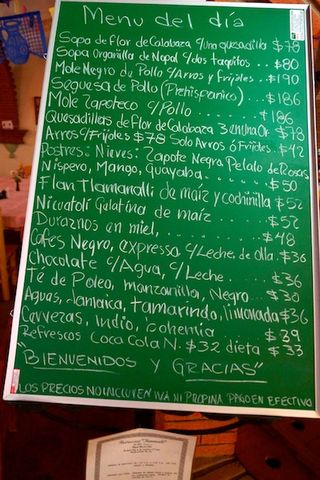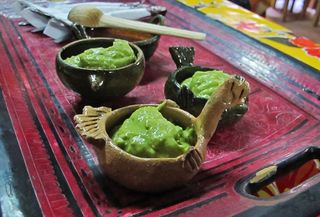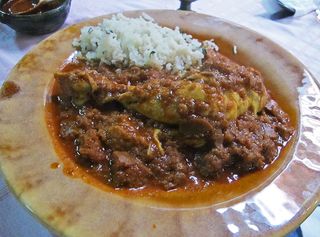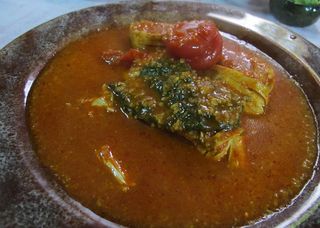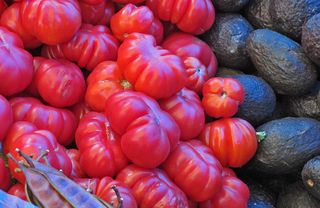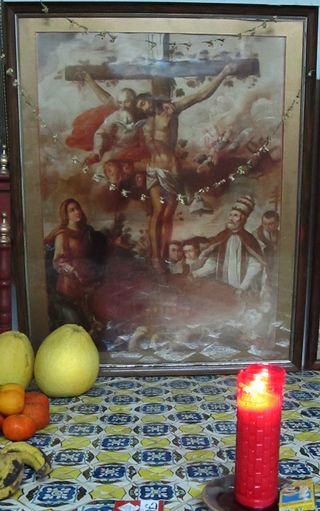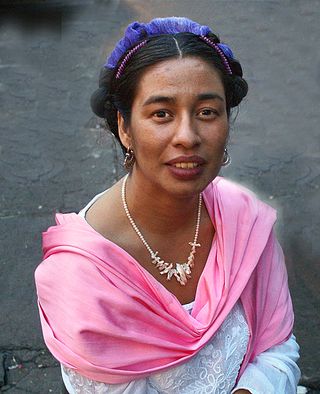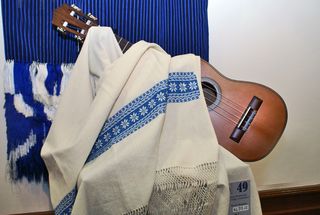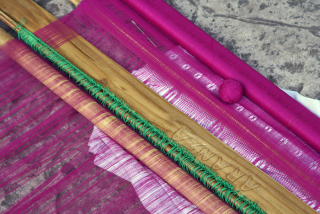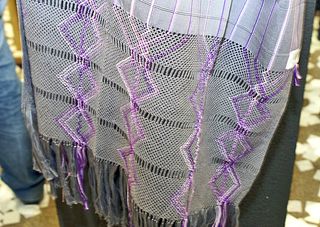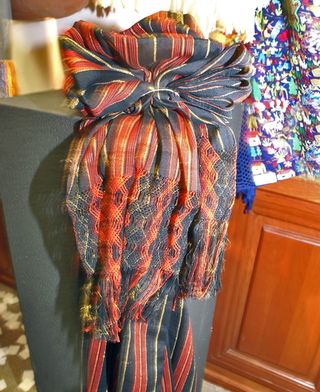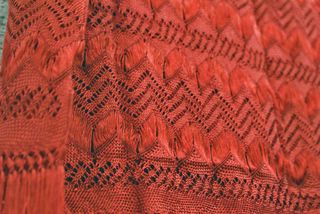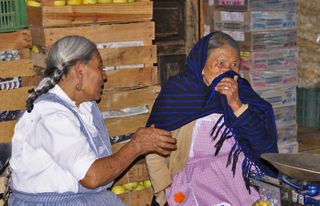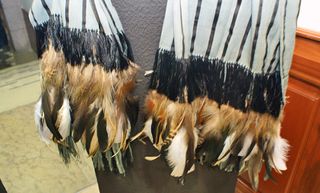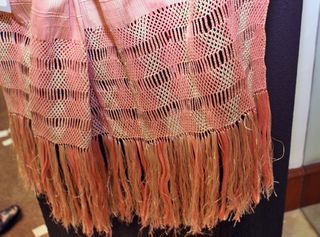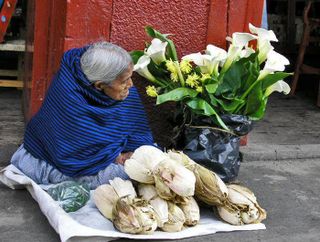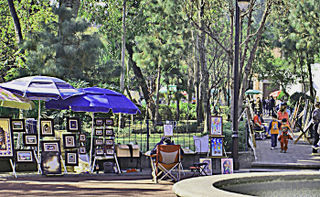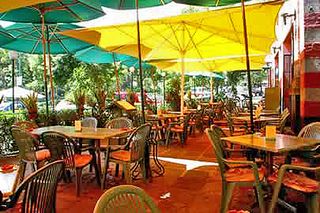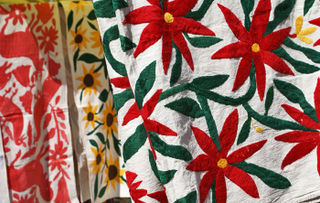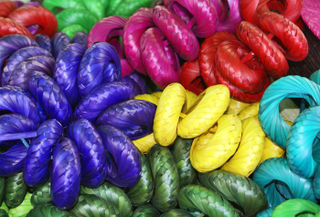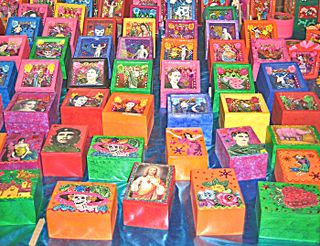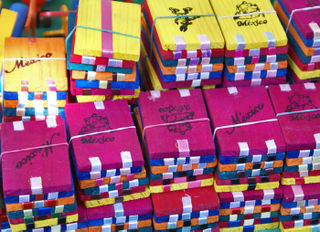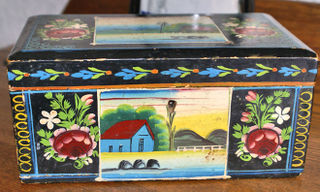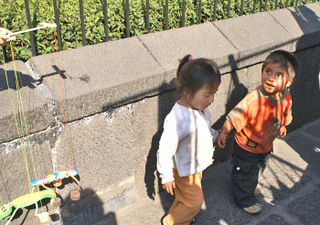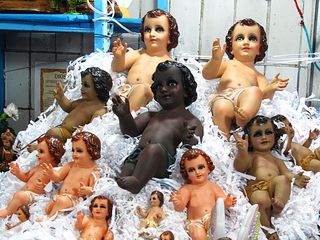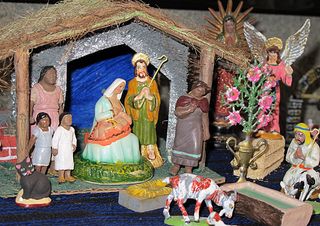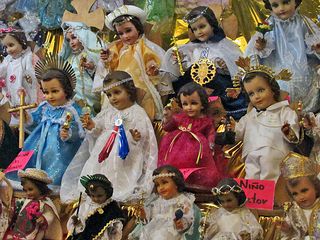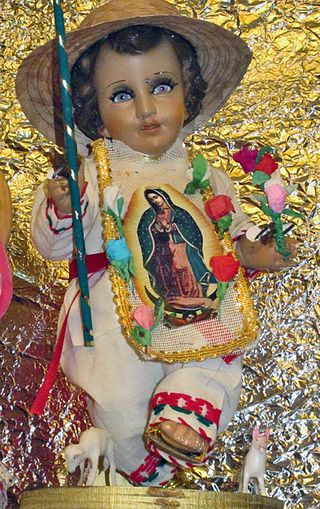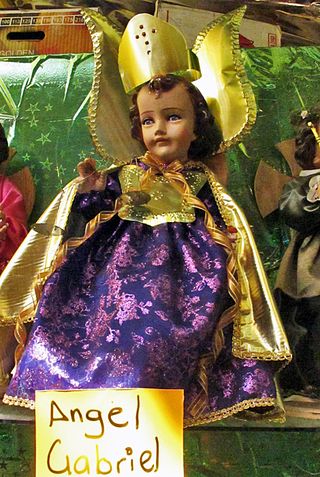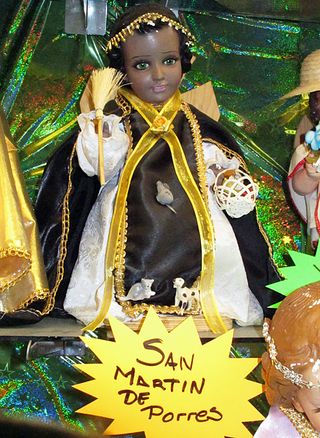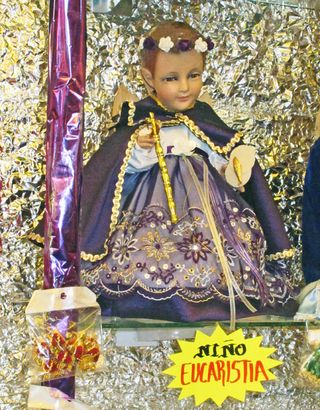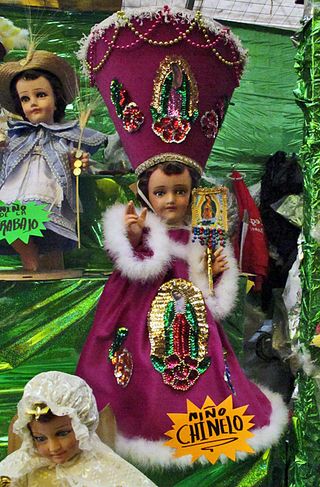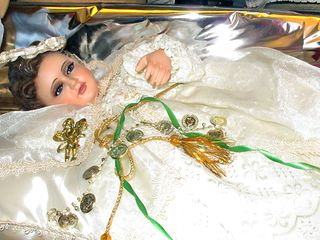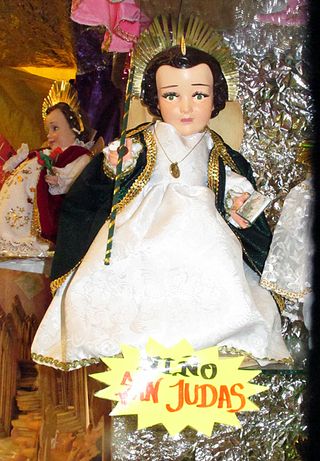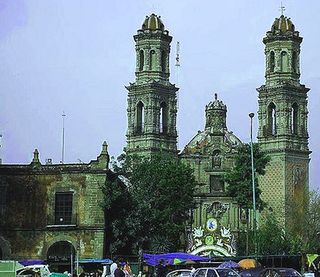
Mexico City's Templo San Hipólito, built starting in 1559 to commemorate the 1520 victory of the Mexica (later known as the Aztecs) over the Spanish invaders in a battle that became known as la Batalla de la Noche Triste (the Battle of the Sad Night), one of the worst defeats the Spanish suffered at the hands of the people they subsequently conquered. The church was finished late in the 17th century.
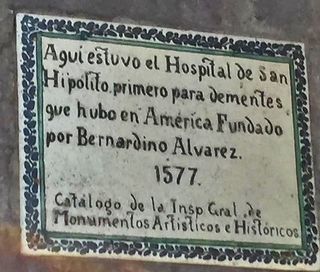
The church location has been a major influence in Mexico City since those early times. Prior to the building of the church, the first mental hospital in the Americas, founded by Bernardino Álvarez, stood on this corner. San Hipólito was the first patron saint of Mexico's capital city.
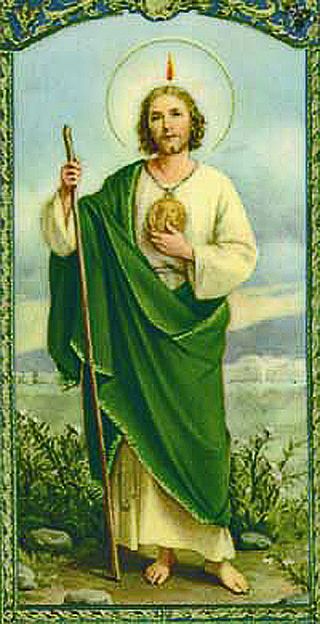
A prayer card image of St. Jude Thaddeus, patron saint of difficult or impossible causes. Your Catholic mother or grandmother–or maybe you yourself– probably have an image like this tucked into a Bible.

Not your grandmother's version of St. Jude. Photo courtesy Tattoomuch.com.
Today, Templo San Hipólito is the site of enormous devotion to Saint Jude Thaddeus, known in Spanish as San Judas Tadeo. The most venerated statue of the saint in Mexico is here, and Mexico is deeply devoted to him and to his image. San Judas's feast day is celebrated on October 28 each year, when as many as 100,000 faithful converge on the small church. The huge number of faithful who visit their beloved saint–starting with the first Mass celebrated at midnight–inevitably cause chaotic traffic jams at the corner where the church is located, one of the busiest junctions in Mexico City.
[youtube=https://www.youtube.com/watch?v=yoEsO7rDFoA&w=420&h=315]
The video will give you an idea of the devotion to St. Jude.
Devotion to San Judas in Mexico City is so great that his feast day is celebrated not only on October 28 each year, but also on the 28th of every month. In July of this year, Mexico Cooks! went to visit the saint on his day.
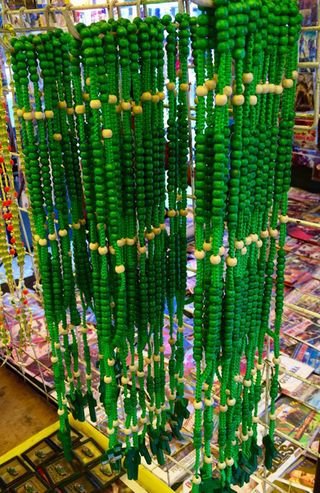
Merchandise sold by vendors around the perimeter of the church–merchandise like these rosaries–is often colored green, white, and gold, the traditional colors of San Judas's clothing.

My companion and I arrived at Templo San Hipólito relatively early, but people had been pouring into the church for each Mass of the day; on the 28th, Masses are said on the hour, all day. This view, from outside the church entrance, did not prepare us for the packed sanctuary.
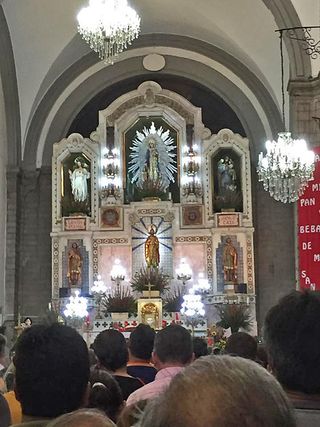
Once we entered the sanctuary, we were unable to advance beyond the half-way point due to the enormous number of people already inside. At the top middle of this photo, you see a very large statue of the Virgin Mary. Below her is San Judas.
Unlike predominately female crowds at Masses in other churches or at prayer services devoted to other saints, the majority of this crowd is male. While women are certainly present, you can see in the photo that the people in front of us were almost all male.
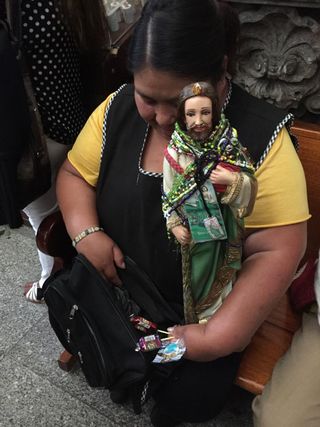
Custom here is to wrap a figure of San Judas in scarves, scapulars, beads, and medals. When I asked this woman, seated on a bench along the inside of the church, if I might take a picture of her statue, she said yes, but bowed her head to show him, not herself. It's also customary to take small gifts, such as the candy this woman is holding, to share with others at the church.
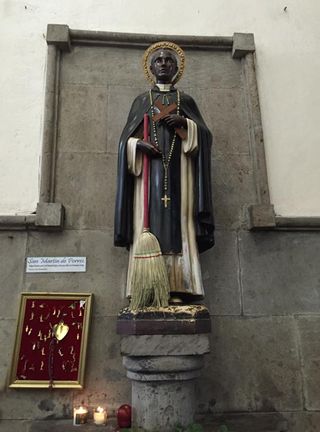
St. Martín de Porres is also much-venerated in Mexico. This life-size statue of him, holding a real broom, is at one side of the San Hipólito interior. Notice that much of the broom straw has been broken off and taken by the faithful. Click on the
photo (and any photo) to enlarge it.
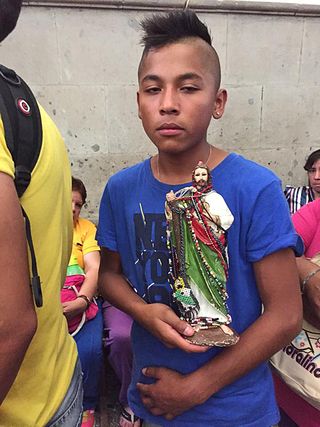
This young man gave me permission to photograph him and his statue.
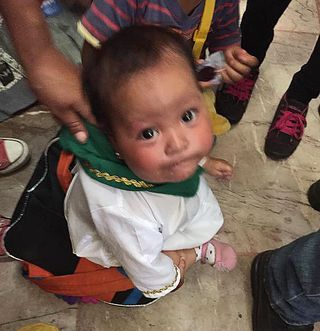
Many parents dress their babies in the green, gold, and white colors of the saint. Usually they have made a vow to St. Jude to do this in thanks for a favor granted; oftentimes, the favor granted is the birth of a healthy child after complications of pregnancy.

The man who carried this elaborately wrapped statue during the entire Mass set it on a stone wall so that I could photograph it.
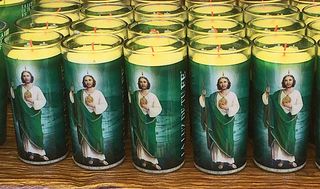
Vendors along the sidewalks sell every kind of St. Jude-related goods. People carry these candles into the church to be blessed, and then carry them home to light their personal altars dedicated to the saint.

We visited many of the booths selling figures of San Judas. The sizes range from about six inches high–like the ones at the left in the front row–to life size or larger. The seated figure just right of center represents Jesús Malverde, an 'informal' saint (one revered by the people but not a saint in the church). Jesús Malverde, a Sinaloa legend, is also known as the 'narco saint', the 'angel of the poor', or the 'generous bandit'. The green sign refers to the copitas (little goblets) filled with San Judas's seeds of abundance just above it. Each goblet with seeds costs 10 pesos. That's approximately 60 US cents, at today's exchange rate.
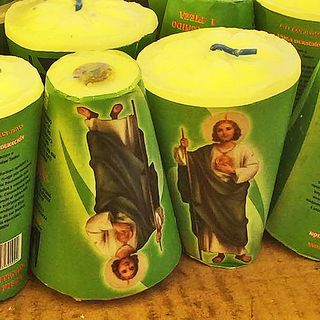
Feeling like your world is standing on its head? You might want to try a chat with St. Jude.
Looking for a tailored-to-your-interests specialized tour in Mexico? Click here: Tours
